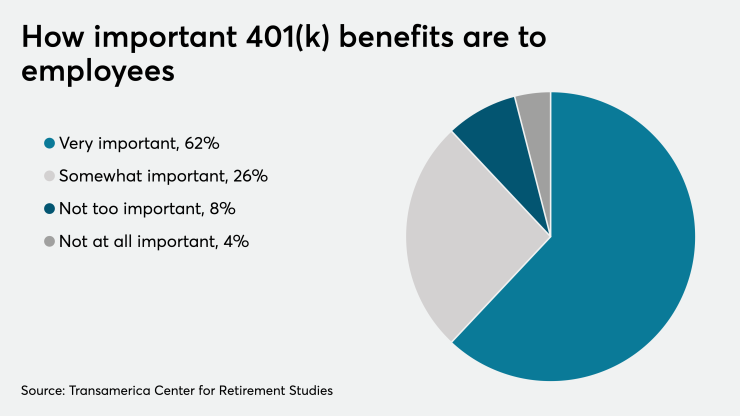The first half of this year has been defined by the coronavirus and our collective response to it. Its impact has been felt in ways far beyond our nation’s health after just a few months, leaving many employers wondering how they can safely move forward. But the unprecedented economic damage is also raising an important question about the future of work: Should an increased focus on physical safety be accompanied by more protections for workers’ finances? When it comes to retirement plans, the answer is absolutely.
The United States has now experienced three major recessions in the past twenty years. Before the current COVID crisis, we began this century with the bursting of the ‘dot com’ bubble in 2001, a reference to the failure of early internet companies that built out infrastructure for the web. That year also included the September 11th terrorist attacks in New York and Washington, D.C., further slowing business investment and travel and bringing the prior decade of growth to an end. Six years later, the prolonged ‘Great Recession’ beginning in 2008 following a meltdown in home mortgages led to a financial crisis requiring hundreds of billions of dollars of taxpayer funds to keep our financial system afloat.
A decade later, after the longest period of sustained economic expansion in U.S. history, we’ve landed in the current COVID recession with 40 million people out of work.
The U.S. economy has shed more than 20 million jobs every year since 2000. What’s going on? The key takeaway seems to be that while recessions are almost impossible to predict, employers can plan for the financial impact caused by workforce adjustments that inevitably happen every year.
According to Forbes, unemployment remains a constant threat and getting laid off is surprisingly common. Each year, about 20 million Americans (more than 1 in 10) lose their job through layoffs, restructurings or the company going out of business. Forbes goes on to say that, “most layoffs come from cost-cutting or corporate restructurings, hitting a few specific individuals, teams or divisions.”
A dual purpose
Now consider the role of 401(k) plans. Retirement plans make millions of loans each year to workers for a variety of reasons, from helping to fund current expenses to dealing with financial emergencies. Retirement loans are highly popular and provide a lower cost source of capital for workers, with an interest rate closer to the prime rate, well below credit cards, and the convenience of automated payroll deductions to manage payments. Twenty percent of employees use loans in a typical year increasing to 40 percent of plan participants over five years.
Recognizing the dual role workplace retirement plan loans can play, Congress earlier this year passed the CARES Act which doubled 401(k) loan limits to $100,000 from $50,000 and allowed borrowers to postpone payments due this year.
But loans put plan assets at risk. Will these loans be repaid?
Research from Deloitte suggests they won’t. In a 2018 study, Deloitte reported that 86% of 401(k) loans default when workers leave jobs. While it is possible that some furloughed workers will manage to keep their loans current after returning to their jobs, laid-off workers have historically lacked the funds to repay their loans - losing many times their loan balance through taxes, penalties and foregone compounded investment earnings. Workers let go in this economy will be hard pressed to do any better.
Plan sponsors that understand these risks and the impact loan defaults can have on retirement outcomes are searching for real solutions. For example, some employers have implemented post-separation repayment, enabling laid-off borrowers to make payments from a checking or savings account. However, Vanguard has reported that fewer than five percent of borrowers eligible to use this feature are doing so. Thinking about workers who have been laid-off, this isn’t surprising. Even if their former employer makes the process easy, they likely don’t have the funds to use it. Fortunately, a new solution is available that does a much better job of meeting their needs.
Protecting participants from defaulting
To protect participants from defaulting, 401(k) loan insurance is now available, which guards them against defaults caused by involuntary terminations like layoffs and workforce reductions. The insurance automatically covers employees when they take a loan and repays the outstanding loan balance should they lose their job. The benefit can be paid by an employer or by those employees borrowing from the plan.
No one knows when the current economy will start growing again or how long it will be before the next recession. But the data does show that protecting retirement plan loans in the event of job loss can measurably protect millions of workers every year — not just in economic downturns — by providing a valuable tool to plan sponsors that ensures a more successful retirement outcome during those difficult and sometimes inevitable business decisions.






